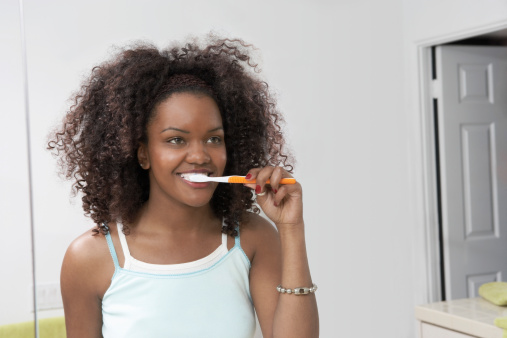
How to brush your teeth perfectly
Everyone brushes but not everyone does it the right way
You probably can’t remember when you learned to brush your teeth. You’ve always done it, mechanically, and although you may have switched toothpaste or the type of brush you use, the method you use probably hasn’t changed.
Are you doing it properly?
Follow these tips:
- Use a brush with soft nylon bristles. Select the firmness you prefer, but take care not to hurt yourself or you may inflict sore little wounds. Change the brush every three months, more or less, or when you see it starts losing its shape.
Electric toothbrushes are a very good option and are recommended by dentists, because they can reach spots where a manual brush cannot. However, it will take you a little longer. The brush will normally alert you with a vibration, so you can brush in four phases, up-down, left right.
- Don’t be wasteful with toothpaste. Squeezing more on won’t mean you are cleaning your teeth any better. Just a little is enough to create lather which will spread throughout the mouth. Toothpaste that contains fluoride helps to prevent the appearance of caries. There are also special toothpastes for sensitive gums, stains, braces and for children, with a milder flavour. Ask your dentist if you can’t decide which to choose.
- Hold the brush at a 45-degree angle, just where the gum starts.
- Always work in the same order. You can start on the left hand side with the bottom teeth, then move to the right, then go up to the right and finish with the top left teeth.
- Move the brush vertically, from top to bottom, to draw the dirt away from under the gum.
- Rinse and then make circular movements in the same area to remove loose remains.
- Don’t forget to brush the backs of your teeth in the same way.
- Hold the brush perpendicular to the lips and brush the molars from back to front.
- Lastly, gently brush the tongue, where there are always remains of food. This will prevent bad breath.
- Rinse well to finish in case there are any little bits hiding anywhere.
- Use dental floss at least once a day, waxed, unwaxed or mentholated, as you prefer. Work from the back of your mouth to the front. Your gums may bleed a little, particularly on the first days, but don’t worry. By removing debris from the gums you will reduce inflammation and there will be less bleeding every day.
- Lastly, you can use a mouthwash once a day that will leave your mouth feeling fresh and, if it contains fluoride, will protect your teeth from plaque formation.
Brush your teeth thoroughly after every meal and, if you can't, at least once a day. Do it carefully, it only takes a few minutes. Your mouth will be much healthier as a result.




